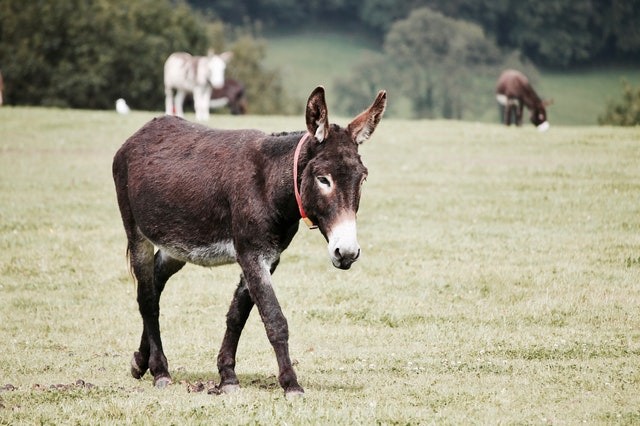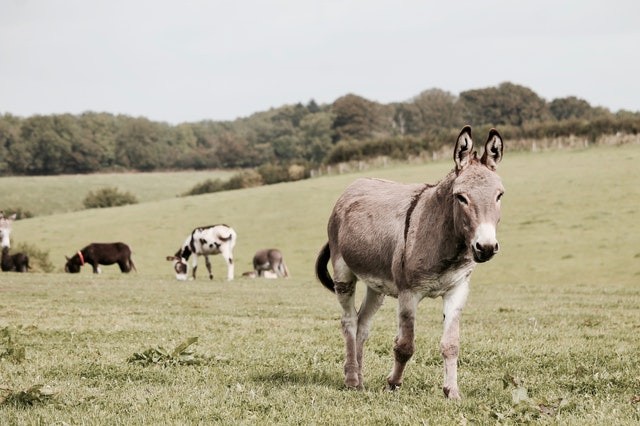According to new research, at least 500 years before horses were created for the purpose, Mesopotamians used hybrids of domesticated donkeys and wild asses to drive their war wagons.

Studying Ancient Bones
In northern Syria, ancient DNA from animal bones has been used to answer a long-standing mystery of what kind of animals the "kungas" mentioned as pulling war wagons were.
"We recognized they were equids [horse-like creatures] from the bones, but they didn't fit the dimensions of donkeys or Syrian wild asses," research co-author Eva-Maria Geigl, a genomicist at the Institut Jacques Monod in Paris, stated. "As a result, they were different in some way, but it was unclear what that difference was."
However, according to the latest study, kungas were robust, swift, and sterile hybrids of a female domestic donkey and a male Syrian wild ass, or hemione - a local equid species.
Treasured Donkeys
According to Geigl, ancient documents identify kungas as highly treasured and expensive creatures, which the complex breeding procedure might explain.
As with many hybrid animals such as mules, she said that each kunga had to be created by mating a female domesticated donkey with an adult wild ass, which had to be kidnapped.
Keeping wild asses tame was extremely difficult since they ran quicker than donkeys and even kungas and were tough to train.
Geigl told Live Science, "They truly bio-engineered these hybrids." "As far as we know, these were the first hybrids, and they had to do it every time for each kunga produced - which is why they were so precious."
Useful Kungas
Kungas are seen dragging four-wheeled battle carts on the renowned "Standard of Ur," a Sumerian mosaic from around 4,500 years ago that is currently on exhibit at the British Museum in London. They are referenced in ancient cuneiform documents on clay tablets from Mesopotamia.
Archaeologists assumed they were a hybrid donkey, but Geigl stated they didn't know whose equid was crossed.
According to her, several experts believed Syrian wild asses were far too little - smaller than donkeys - to be bred to produce kungas.
Sadly, the last Syrian wild ass - which stood less than a meter (3 feet) tall - died in 1927 at the world's oldest zoo, the Tiergarten Schönbrunn in Vienna, Austria, and its bones are now housed in the city's natural history museum. The species is now extinct.
Matching DNAs

In the new study, the researchers matched the DNA of the last Syrian wild ass from Vienna with the genome of a wild ass found at the archaeological site of Göbekli Tepe in southeastern Turkey.
Sadly, the last Syrian wild ass - which stood less than a meter (3 feet) tall - died in 1927 at the world's oldest zoo, the Tiergarten Schönbrunn in Vienna, Austria, and its bones are now housed in the city's natural history museum. The species is now extinct.
In a new study, the researchers matched the DNA of the last Syrian wild ass from Vienna with the genome of a wild ass found at the archaeological site of Göbekli Tepe in southeastern Turkey.
According to Geigl, the comparison revealed that both creatures were of the same species, but the old wild ass was significantly bigger.
This suggests that due to environmental factors such as hunting in the recent past. The Syrian wild ass species has grown considerably smaller than in the past.
According to a 2020 study published in the journal Science Advances by several experts, the Sumerians were the first to produce kungas around 2500 BCE - at least 500 years before the first domesticated horses were transported from the steppe north of the Caucasus Mountains.
Why are these Donkeys Special?
According to ancient documents, Assyrians and Sumerians' descendant governments bred and sold kungas for generations. A carved stone panel from Assyrian capital Nineveh, currently in the British Museum, depicts two men escorting a wild ass they had kidnapped.
A royal burial complex at Tell Umm el-Marra in Northern Syria, which has been dated to approximately the early Bronze Age between 3000 BCE and 2000 BCE, provided the kunga bones for the newest study; the location is considered to represent the ruins of the ancient city of Tuba described in Egyptian texts.
Jill Weber, a University of Pennsylvania archaeologist, unearthed the bones roughly ten years ago as a study co-author. They were kungas, according to Weber, since their teeth bore scars from bit harnesses and patterns of wear that indicated they had been carefully fed rather than permitted to graze like other donkeys.
Kungas could run faster than horses, so they were presumably used to pull war wagons even after domesticated horses were introduced to Mesopotamia, she added.
Although domesticated horses were easier to produce than wild horses, the last kungas died out, and no more were born from donkeys or wild asses, Geigl explained.
For more animal news, don't forget to follow Nature World News!
© 2025 NatureWorldNews.com All rights reserved. Do not reproduce without permission.





